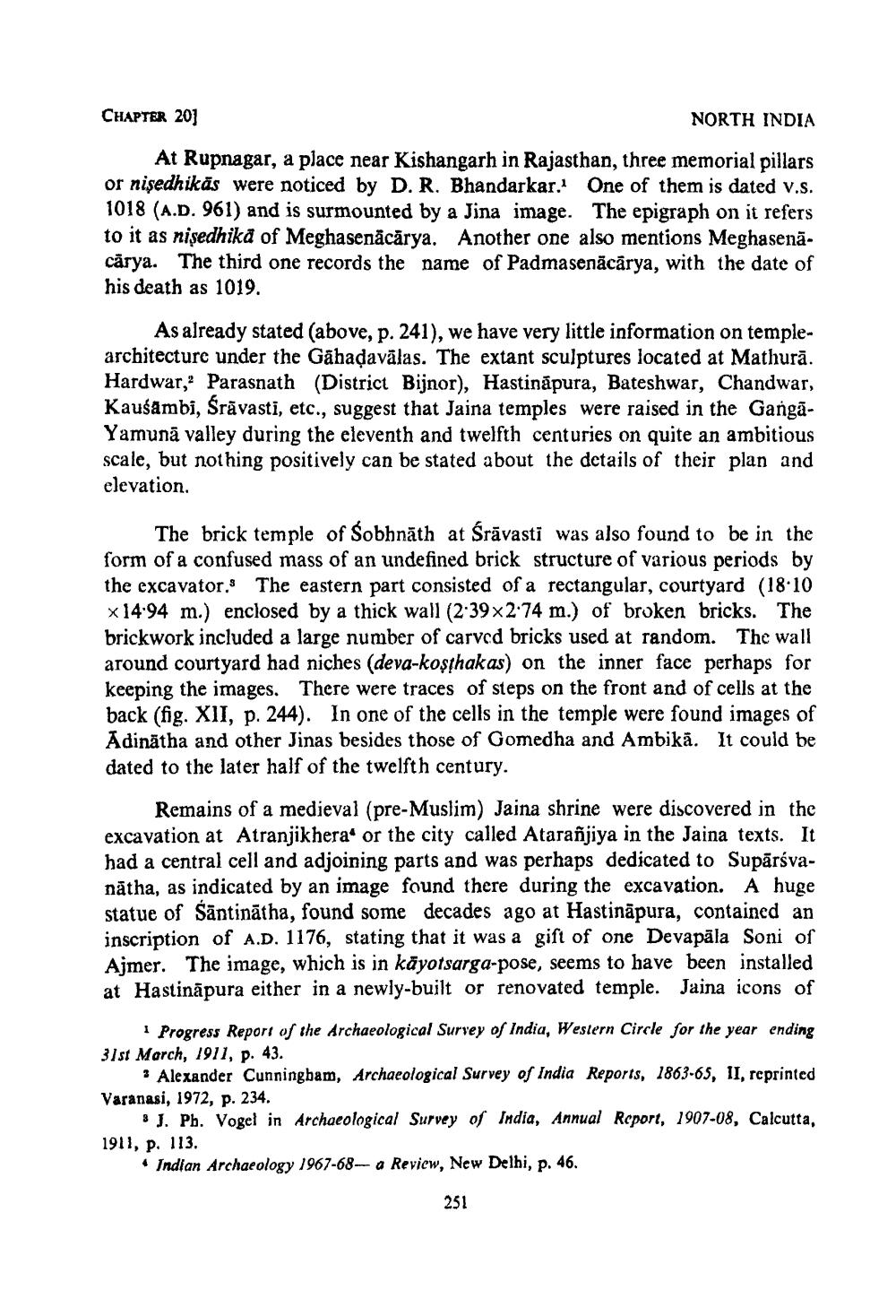________________
CHAPTER 201
NORTH INDIA
At Rupnagar, a place near Kishangarh in Rajasthan, three memorial pillars or nişedhikäs were noticed by D. R. Bhandarkar. One of them is dated v.s. 1018 (A.D. 961) and is surmounted by a Jina image. The epigraph on it refers to it as niședhika of Meghasenācārya. Another one also mentions Meghasenācārya. The third one records the name of Padmasenācārya, with the date of his death as 1019.
As already stated above, p. 241), we have very little information on templearchitecture under the Gahadavālas. The extant sculptures located at Mathurā. Hardwar, Parasnath (District Bijnor), Hastinapura, Bateshwar, Chandwar, Kausambi, Srāvasti, etc., suggest that Jaina temples were raised in the GangaYamunā valley during the eleventh and twelfth centuries on quite an ambitious scale, but nothing positively can be stated about the details of their plan and elevation.
The brick temple of Sobhnāth at Srāvasti was also found to be in the form of a confused mass of an undefined brick structure of various periods by the excavator. The eastern part consisted of a rectangular, courtyard (18:10 x14:94 m.) enclosed by a thick wall (2:39x2:74 m.) of broken bricks. The brickwork included a large number of carved bricks used at random. The wall around courtyard had niches (deva-koşthakas) on the inner face perhaps for keeping the images. There were traces of steps on the front and of cells at the back (fig. XII, p. 244). In one of the cells in the temple were found images of Adinātha and other Jinas besides those of Gomedha and Ambikä. It could be dated to the later half of the twelfth century
Remains of a medieval (pre-Muslim) Jaina shrine were discovered in the excavation at Atranjikhera or the city called Atarañjiya in the Jaina texts. It had a central cell and adjoining parts and was perhaps dedicated to Supārsvanātha, as indicated by an image found there during the excavation. A huge statue of śāntinātha, found some decades ago at Hastināpura, contained an inscription of A.D. 1176, stating that it was a gift of one Devapāla Soni of Ajmer. The image, which is in kāyotsarga-pose, seems to have been installed at Hastināpura either in a newly-built or renovated temple. Jaina icons of
Progress Report of the Archaeological Survey of India, Western Circle for the year ending 31st March, 1911, p. 43.
* Alexander Cunningham, Archaeological Survey of India Reports, 1863-65, II, reprinted Varanasi, 1972, p. 234.
* J. Ph. Vogel in Archaeological Survey of India, Annual Report, 1907-08, Calcutta, 1911, p. 113.
• Indian Archaeology 1967-68-a Review, New Delhi, p. 46.
251




